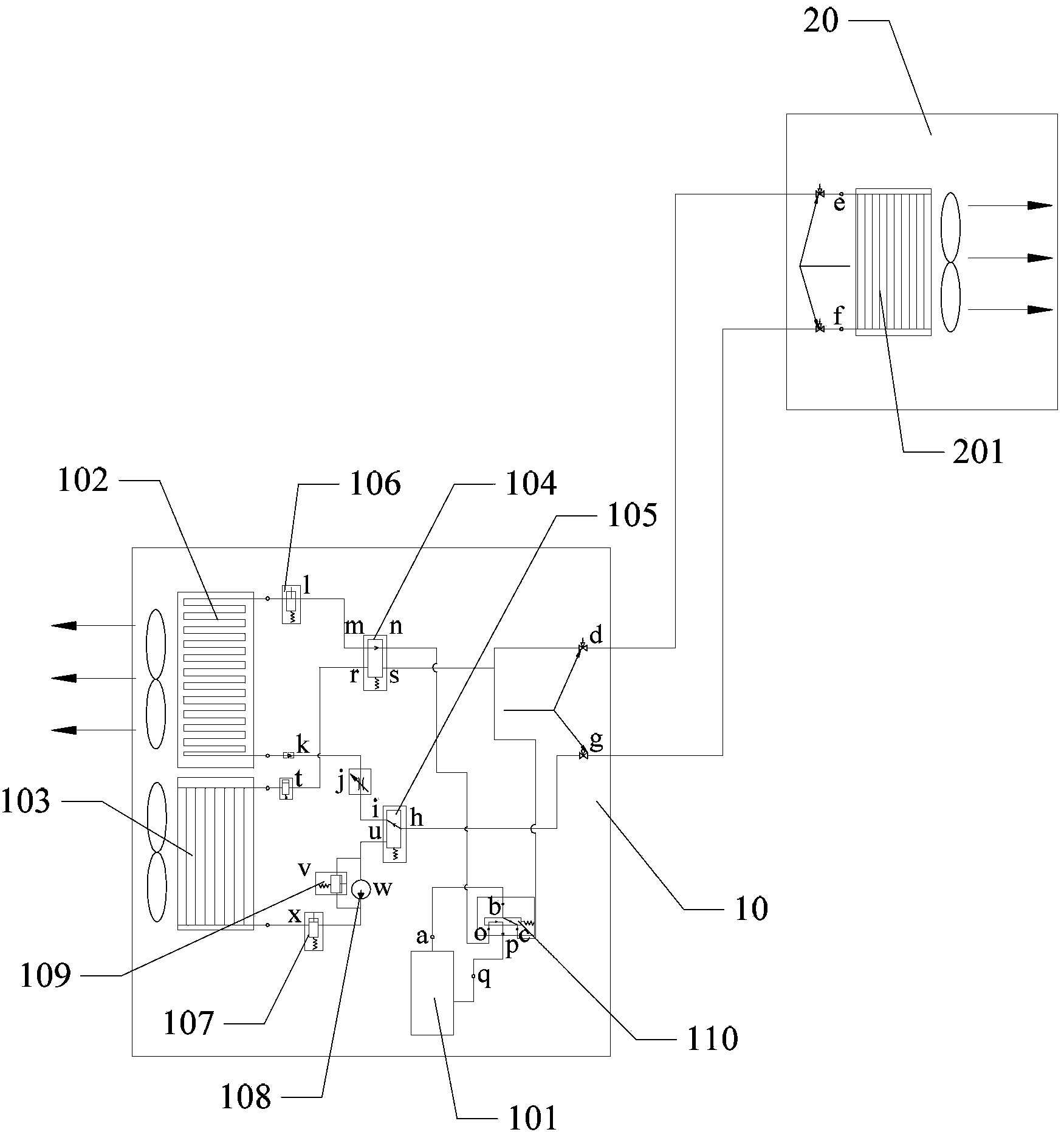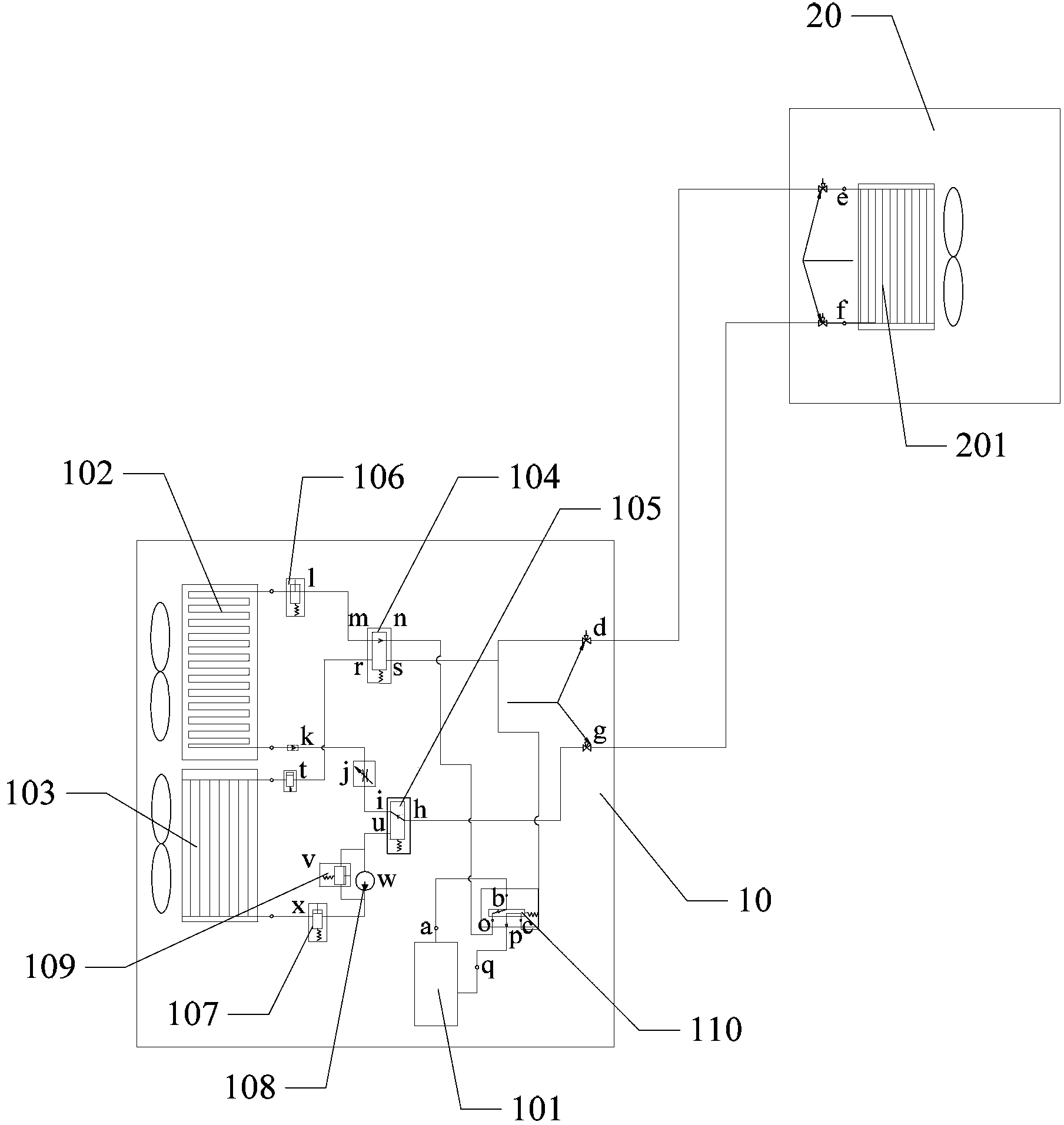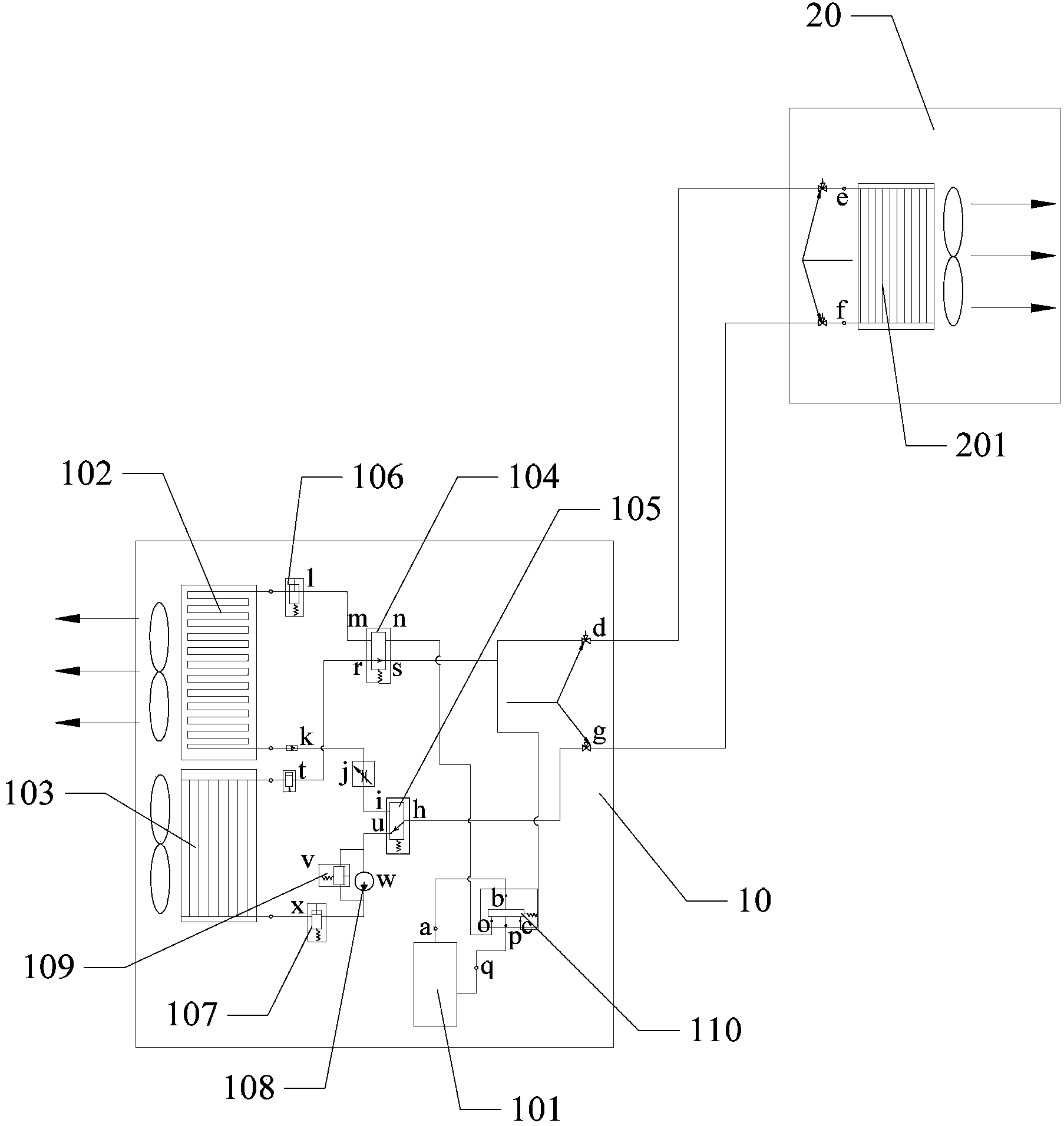Refrigeration system and refrigeration method thereof
A refrigeration system and refrigeration mode technology, applied in heating and ventilation control systems, air conditioning systems, heating and ventilation safety systems, etc. The effect of reducing procurement costs
- Summary
- Abstract
- Description
- Claims
- Application Information
AI Technical Summary
Problems solved by technology
Method used
Image
Examples
Embodiment Construction
[0036] It should be understood that the specific embodiments described here are only used to explain the present invention, not to limit the present invention.
[0037] The invention provides a refrigeration system, which is used for cooling down the temperature of equipment in a computer room of a communication base station. The air-conditioning refrigeration system and the heat pipe refrigeration system are combined into a whole refrigeration system, and the air-conditioning mode loop and the heat pipe mode loop are respectively formed. Different cooling modes are used for cooling under different outdoor ambient temperatures, and when switching to a cooling mode, all refrigerants in the system in the current cooling mode are recovered.
[0038] refer to Figure 1 to Figure 4 , figure 1 It is a structural schematic diagram of the air-conditioning refrigeration mode in the first embodiment of the refrigeration system of the present invention; figure 2 It is a structural sc...
PUM
 Login to View More
Login to View More Abstract
Description
Claims
Application Information
 Login to View More
Login to View More - R&D
- Intellectual Property
- Life Sciences
- Materials
- Tech Scout
- Unparalleled Data Quality
- Higher Quality Content
- 60% Fewer Hallucinations
Browse by: Latest US Patents, China's latest patents, Technical Efficacy Thesaurus, Application Domain, Technology Topic, Popular Technical Reports.
© 2025 PatSnap. All rights reserved.Legal|Privacy policy|Modern Slavery Act Transparency Statement|Sitemap|About US| Contact US: help@patsnap.com



